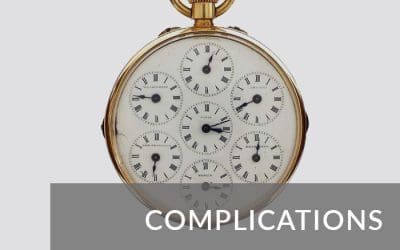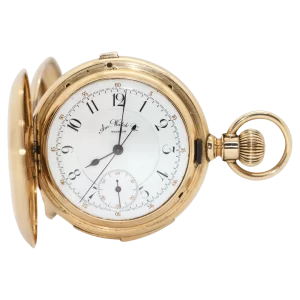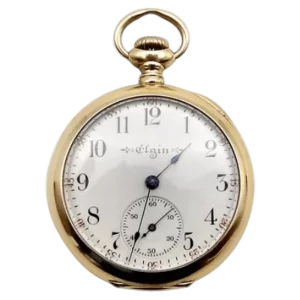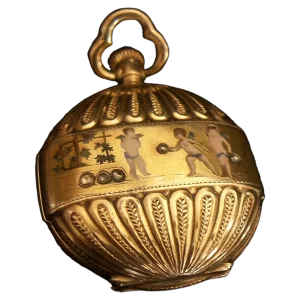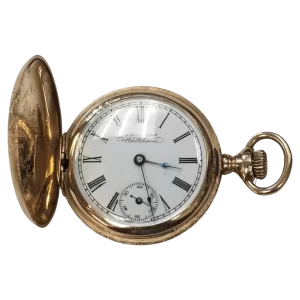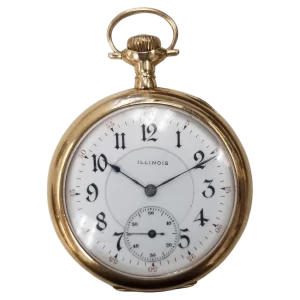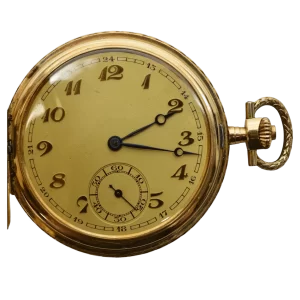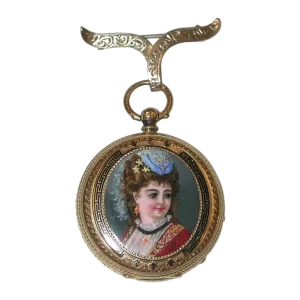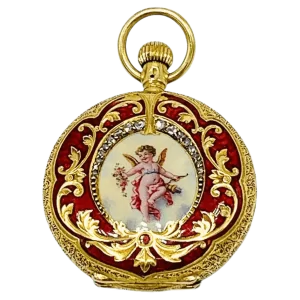Early clocks were powered by heavy weights attached to long chains. Every day the weight was returned to the top of the clock, and throughout the day gravity pulled the weight down, thereby causing the gears to move. Unfortunately, this only worked if the clock was mounted vertically and there was room for the weights to hang down. The invention of the mainspring, though, enabled clocks to be portable and eventually gave rise to what we call a pocket watch today. One problem with early mainsprings, though, was that as the spring wound down it lost power, and as a result the watch or clock would get slower and slower as the day progressed.
“Fusee” [also called “chain driven”] watches use a very fine chain running from the mainspring barrel to a special truncated cone [the “fusee”] to regulate the force of the spring as it winds down, as shown in the examples below:

As the mainspring unwinds, the chain moves from the top of the fusee to the bottom, thereby increasing the tension on the mainspring. The older fusee watches used a “verge” escapement that, because it is mounted vertically within the watch, required the watch to be very thick. These watches, generally referred to as “verge fusees,” were usually not as accurate as their later counterparts, although there were some notable exceptions such as John Harrison’s famous “No. 4” marine chronometer. Perhaps to make up for this lack of accuracy, verge fusees were almost always works of art, employing intricately engraved and hand pierced balance bridges [or “cocks”] and other ornamentations.
In the early 1800’s fusee watches began to be made with the newer “lever” escapement which, because they were mounted horizontally instead of vertically, allowed the watches to be thinner. These so-called “lever fusees” were also generally much more accurate as well. As the watches became more accurate timekeepers, however, less emphasis was placed on making them as artistic, and you rarely see much in the way of hand piercing or engraving on the later lever fusee watches.
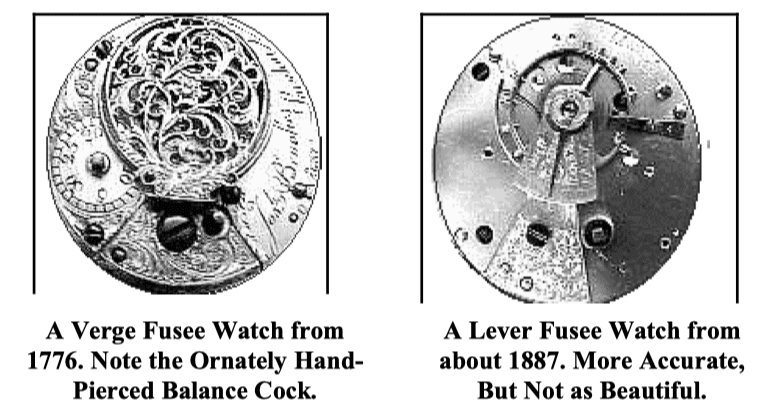
Improved mainspring design, as well as special adjustments to the balance wheel and hairspring, eventually did away with the need for the fusee. By about 1850 most American watchmakers had abandoned the fusee entirely, although many English watchmakers continued to make fusee watches right up until the beginning of the 20 th century. One notable exception was the American Hamilton Watch Company that decided to use a fusee in their Model #21 Marine Chronometer that they built for the U.S. Government in the 1940’s. This was probably due more to the fact that they built their model based upon existing European designed chronometers, though, than it had to do with the need for the special properties of the fusee.
One important note about winding a fusee watch: although many French and Swiss fusees are wound through a hole in the dial, most English fusees are wound from the back like a “normal” key wind watch. There is one very important difference, though! A “normal” [i.e., non fusee] watch winds in a clockwise direction. The same is true for most fusee watches that wind through a hole in the dial. A fusee that is wound from the back, however, winds in a COUNTER CLOCKWISE direction. Because the fusee chain is so delicate, it is all too easy to break it if you try to wind the watch in the wrong direction. So, if you have any doubt as to whether your watch is a fusee or not, be sure to try gently winding it in a counter clockwise direction first!
One final tidbit of information: fusee watches are distinctive not only for the fusee itself but also for the fine chain running from the fusee to the special mainspring barrel. A non-fusee watch is therefore generally referred to as having a “going barrel” to distinguish it from a fusee watch.


